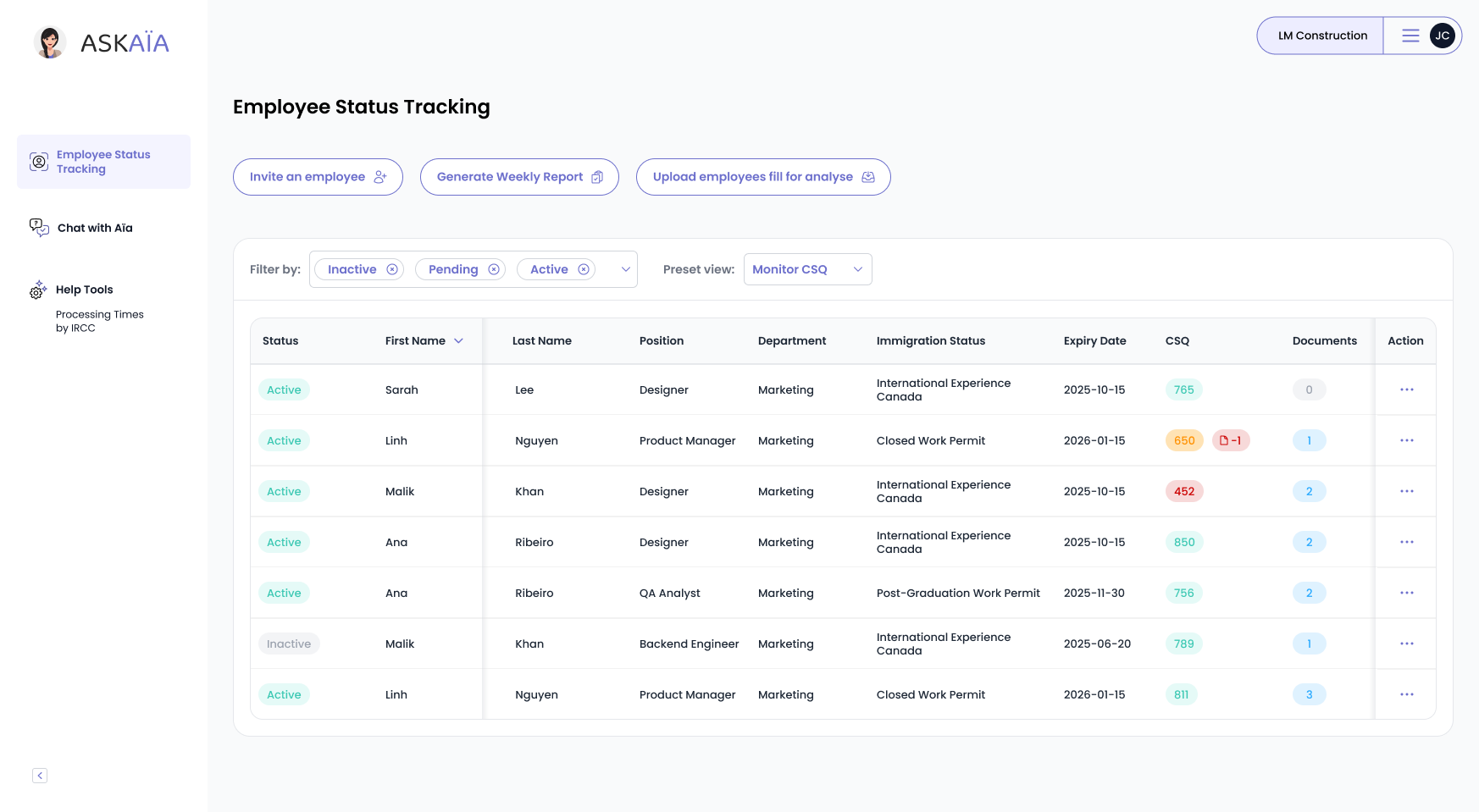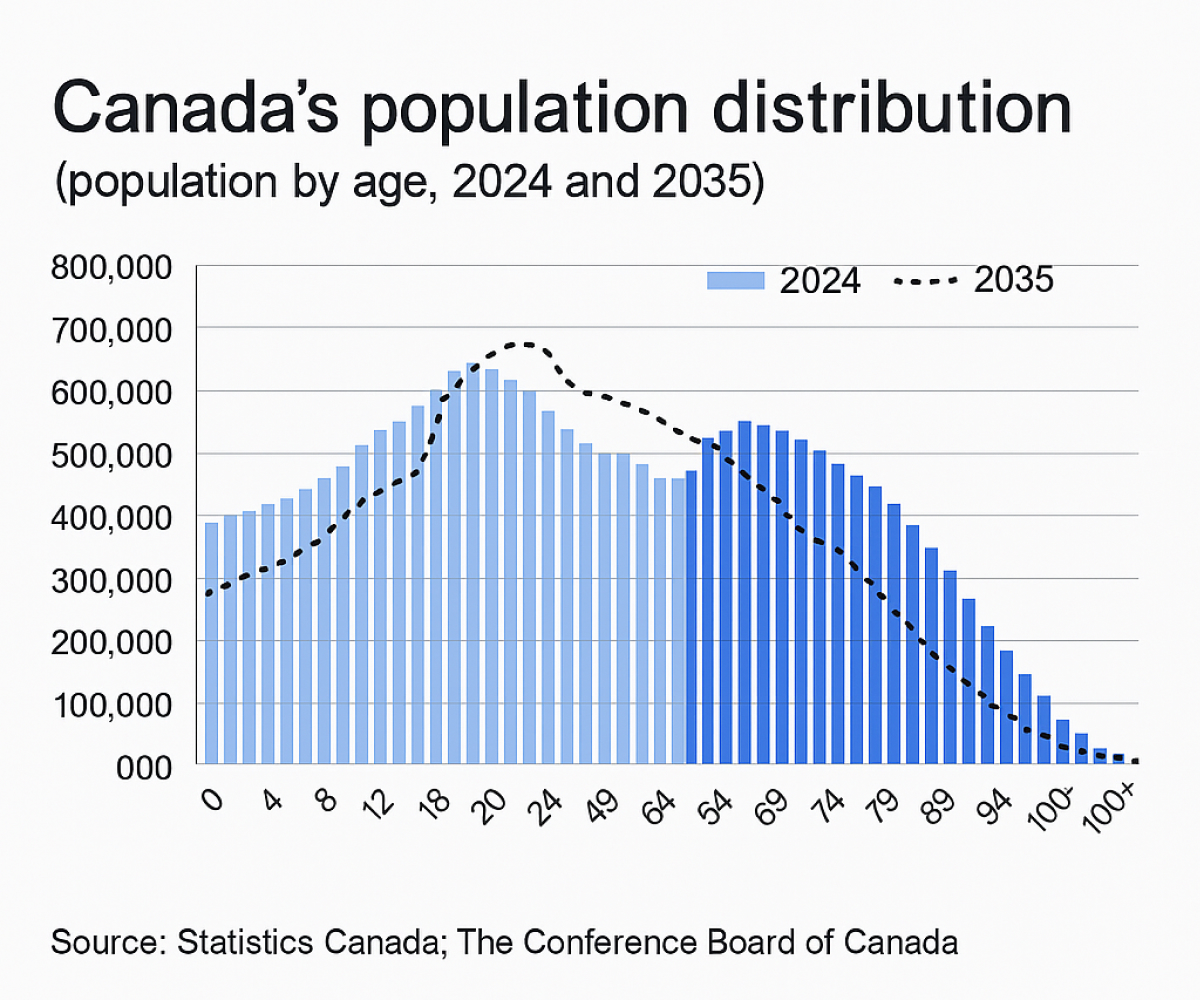Canada's complex work permit system often deters both skilled workers and employers. The standard route, through the Labour Market Impact Assessment (LMIA), can take months, cost hundreds of dollars, and involve strict employer obligations. Fortunately, there is a faster alternative available for nationals of specific countries.
Under the International Mobility Program (IMP), Canada allows LMIA-exempt work permits for eligible individuals whose home countries have signed free trade agreements (FTAs) with Canada. These permits reduce processing times and paperwork, giving professionals quicker access to Canadian opportunities.
What you will find in this article
Context: What Is an LMIA-Exempt Work Permit?
Normally, Canadian employers hiring foreign workers must demonstrate that no Canadian or permanent resident is available to fill the job. This is the essence of the Labour Market Impact Assessment (LMIA).
However, the International Mobility Program (IMP) provides exemptions from this requirement for foreign workers who bring broad economic, cultural, or other competitive advantages to Canada. One major source of these exemptions: international trade agreements.
Work permits under the IMP do not require an LMIA but do require a job offer, submission through IRCC’s Employer Portal, and payment of a compliance fee.
Countries Eligible for LMIA Exemptions via Trade Agreements
Nationals from the following countries may qualify for LMIA-exempt permits under Canada’s FTAs. These permits are typically available for specific professional occupations listed in each agreement’s annex:
| Trade Agreement | Eligible Countries | Example Occupations (Not exhaustive) |
| CUSMA (formerly NAFTA) | U.S., Mexico | Engineer, Economist, IT Analyst, Urban Planner, Graphic Designer |
| Canada-UK TCA | United Kingdom | Accountant, Consultant, Architect, Mathematician, HR Specialist |
| CETA | EU member states (e.g., France, Germany, Spain) | Lawyer, Scientist, Project Manager, Market Analyst, Biologist |
| Pacific Alliance | Chile, Colombia, Peru, Mexico | Technician, Researcher, Analyst, Civil Engineer, Medical Technologist |
| CKFTA | South Korea | Marketing Manager, Engineer, Auditor, Logistics Specialist, Technical Writer |
| Chile FTA | Chile | Designer, Translator, Legal Advisor, Urban Development Specialist |
| Panama FTA | Panama | Environmental Specialist, Urban Planner, Database Administrator |
Eligibility also depends on profession-specific annexes and proof of qualifications.
Metrics: LMIA vs. LMIA-Exempt Work Permits (2024 Data)
Understanding the differences in timelines and complexity between LMIA-based and LMIA-exempt permits is crucial for planning. Here’s how they compare:
| Permit Type | Average Processing Time | Annual Issuances | Employer Burden |
| LMIA-Based Work Permit | 7.1 months (avg. 2024–25) | ~95,000 | High (ads, forms, wait) |
| IMP (LMIA-Exempt) | 3.2 months | ~88,000 | Low (no LMIA needed) |
Source: IRCC Open Data, 2024; CIC News, 2025.
Case Examples
| Name | Country | FTA Used | Job Title | Permit Time | Path to PR |
| Ana | Colombia | Pacific Alliance | Civil Engineer | 2.5 months | Express Entry via CEC |
| Thomas | France | CETA | Financial Analyst | 3 months | Ontario PNP – Human Capital |
| Emily | USA | CUSMA | Management Consultant | 1.8 months | EE - FSW, with job offer |
These cases show how LMIA-exempt permits accelerate entry into the Canadian workforce and pave the way for permanent residency under various federal and provincial programs.
Key Requirements and Documentation
To apply for an LMIA-exempt permit under a trade agreement, applicants must provide:
- Proof of citizenship from an eligible country
- A job offer letter with detailed terms and conditions
- Proof of qualifications, such as academic credentials and experience
- Annex-matching job title, aligned with the agreement’s list of professions
Employers must:
- Submit the offer via IRCC’s Employer Portal
- Pay the compliance fee of $230 CAD (unless exempt)
Employer Insights: Why This Matters in 2025
Labour shortages, long LMIA timelines, and rising audit risks have made LMIA-exempt hiring increasingly attractive for Canadian employers. The benefits include:
- Reduced administrative load: no job advertising or labour market proof
- Faster recruitment: reduced processing time means quicker onboarding
- Lower risk: fewer rejections due to formal errors or unmet conditions
- Better audit protection: streamlined processes through the Employer Portal
However, employers remain accountable. According to ESDC, 11% of employers audited in 2024 were found non-compliant due to improper documentation or misuse of exemptions.
What Immigrants Should Do Next
If you're a professional from one of the eligible countries, you may be able to work in Canada faster by applying through an LMIA-exempt stream. The following table outlines the essential steps and what each one accomplishes.
Summary Table
| Step | Action | Benefit |
| Determine eligibility | Check country & job title under FTA annex | Confirms LMIA exemption |
| Secure job offer | Ensure employer uses Employer Portal | Compliance & tracking |
| Gather documentation | Citizenship, qualifications, job offer | Smooth application process |
| Apply under IMP | Use appropriate FTA code | Avoids LMIA wait and costs |
| Track Canadian experience | Work toward PR eligibility | Access to EE, PNPs, CEC |
Each of these steps supports both short-term work authorization and long-term immigration planning. Verifying your profession’s eligibility and ensuring correct documentation upfront will significantly increase your chances of success.
You may be eligible for a Canadian work permit without an LMIA. Qualification depends on your citizenship, occupation, and whether your employer is familiar with using this streamlined system.
Not sure if you qualify? Take a free assessment with AskAïa to explore your options under Canada’s LMIA-exempt trade agreements.

Let’s get your demo started
Book a demo
You May Also Like
These Related Stories

Colombians Working in Canada: LMIA Exempt Jobs You Should Know
For many Colombians, settling in Canada represents a major opportunity, but also a challenge filled with legal procedures and complex requirements. Fo …

New LMIA Rules Limit Low-Wage Foreign Worker Hiring in 2025
Since January 2025, Canada will tighten rules on low-wage LMIA applications, restricting hiring in high-unemployment regions. This aims to prioritize …

Canada Counts on Newcomers: 2025 Economic Outlook Fully Unveiled
Is immigration helping or hurting Canada’s economy? At the 2025 Economic Outlook event hosted by Wilfrid Laurier University, experts offered clear ans …
